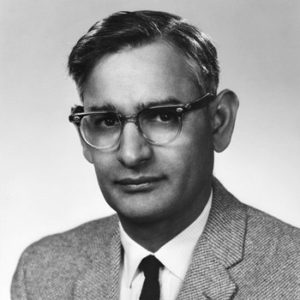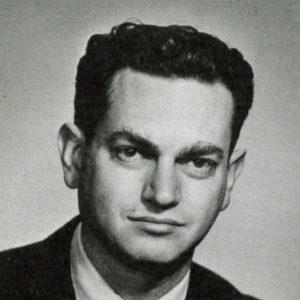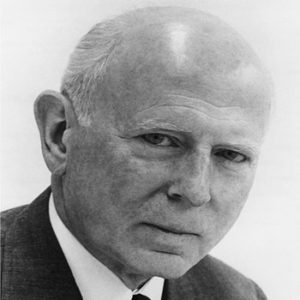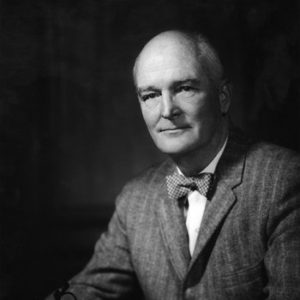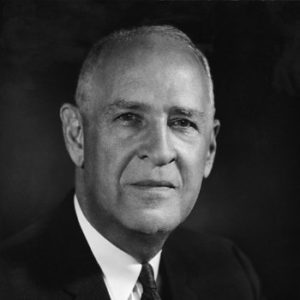Special remarks by Robert Marston
Mrs. Lasker, distinguished guests, members of the Lasker Award Committee, Mr. Chairman, ladies and gentlemen:
I stand before you two and a half months after assuming the position of the director of the National Institutes of Health—a job described by President Johnson as staggering and by the Secretary of Health, Education and Welfare as one with tremendous challenges. Yet I have found during this brief time, experiences so heartening, advances so promising, and support from all segments of our society so firm that I want to report to you a most stimulating endeavor, with tremendous potential even when viewed against the background of the remarkable accomplishments of past years.
The National Institutes of Health is dedicated primarily to the conduct and support of research on the major diseases of man. This staggering task demands a big organization. The NIH program has contributed to every major health institution in the country and has benefited directly or indirectly every citizen. For almost every medical advance in this country in recent years has been supported to some degree by NIH programs. In general, the dollar support has been greatest in those areas of greatest death and disability—cardiovascular disease, cancer, arthritis and metabolic diseases, neurological diseases, allergy and infectious disease, dental diseases, and the problems of child health and human development. Support is also extended to research training, institutions, and special resources.
On April 1 of this year, two new organizations and two new responsibilities were merged with the research mission of the National Institutes of Health. The charge is to blend in a purposeful and effective way the federal government's resources in medical research, education of health professionals, and biomedical communications. The resources of the Bureau of Health Manpower and of the National Library of Medicine will be severely taxed during the next few years as they seek to meet the urgent needs in their fields.
But our object today is to focus on the contributions of research. Those of the past and the potentials of the future, owing largely to the active work or stimulus of individuals preset in this room, have created a research structure unparalleled in excellence of young investigators emerging from research training programs and participating in the formulation of broad policies and strategies. These are the men and women who must decide how to explore the unknown. And they are betting their careers, their life's work, that the research they are doing is in the right direction—that it will pay off.
Jury
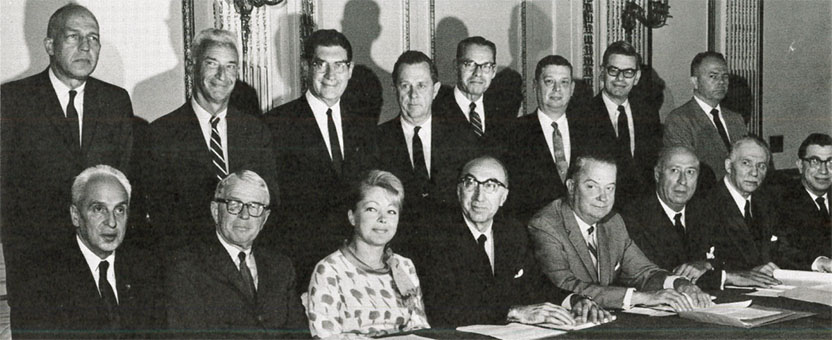
1968 Albert Lasker Medical Research Awards Jury
First Row, left to right: Severo Ochoa, New York University School of Medicine ● John Talbott, The Journal of the American Medical Association ● Mathilde Krim, Sloan-Kettering Institute ● Michael DeBakey, Chair of the Jury, Baylor University College of Medicine ● Howard Rusk, Institute of Rehabilitation Medicine ● Irving Wright, Cornell University Medical College ● Sidney Farber, Harvard Medical School at the Children’s Hospital ● Stanley Yolles, National Institutes Health
Second Row, left to right: David Karnofsky, Sloan-Kettering Institute ● Martin Cherkasky, Montefiore Hospital ● E.M. Papper, Columbia University ● Edward Dempsey, Columbia University ● Saul Krugman, New York University Medical Center ● George James, Mount Sinai School of Medicine ● Alan Miller, Department of Mental Hygiene State of New York ● Frederick Stone, National Institute of General Medical Sciences
Not pictured: H. Stanley Bennett, The University of Chicago ● Philip Lee, Assistant Secretary for Health and Scientific Affairs ● H. Houston Merritt, Columbia University ● George Palade, The Rockefeller University
